Paint, Pencil, Print: 10 Artworks for 10 Years

2025 is a very special year for the University of Reading Art Collection – we turn 10!
To celebrate this moment, we have chosen to display 10 artworks that highlight this small but vibrant collection. These artworks showcase different subject matter, authorship, ownership (provenance), materials and techniques. We have also invited different members of our community to contribute their thoughts, so alongside each artwork, you can also read a personal perspective from a guest voice.
We hope you enjoy looking at these artworks and reading these viewpoints, whether you’re visiting us in-person or celebrating with us from afar.
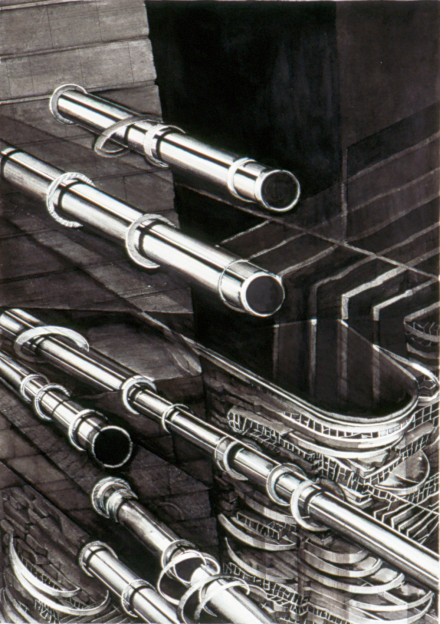
Echoes of the Deep
This monochrome artwork is the latest acquisition into the University of Reading Art Collection – it was donated by the artist’s family in April 2025. It is a drawing by the artist and writer, Deanna Petherbridge, who was a Lecturer at the University of Reading’s School of Art in the 1970s.
Working almost exclusively in pen, ink and paper, Petherbridge dedicated her life to the study and practice of drawing. Her works – like this one here – use imagined architectural and industrial imagery as a metaphor, often to deal with complex social and political issues.
Listen to a personal perspective on this artwork by Hannah Lyons, Curator of the University Art Collection.
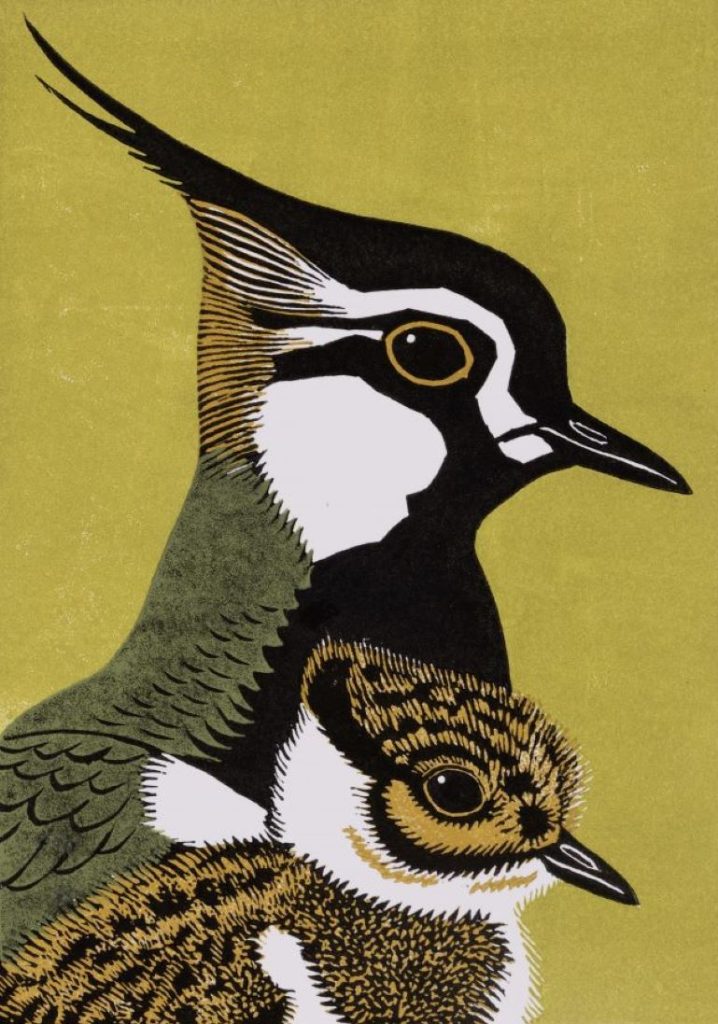
Peewit and Son
Robert Gillmor’s striking prints of British birds are very familiar: each one instantly recognisable as ‘a Gillmor’. Affectionately known as ‘the grandfather of wildlife art’, he was a keen ornithologist and one of Britain’s most influential bird artists.
Born in Reading, Gillmor studied at the University’s School of Art in the late 1950s. In the 1990s, he relocated from Berkshire to north Norfolk, known as a birdwatcher’s paradise. The county was a major source of inspiration for his linocut prints, and he was often seen in the marshes with binoculars and sketch pad in-hand, much to the delight of other visitors.
Listen to a personal perspective on this artwork by Emily Gillmor, 2D Technician at Reading School of Art.
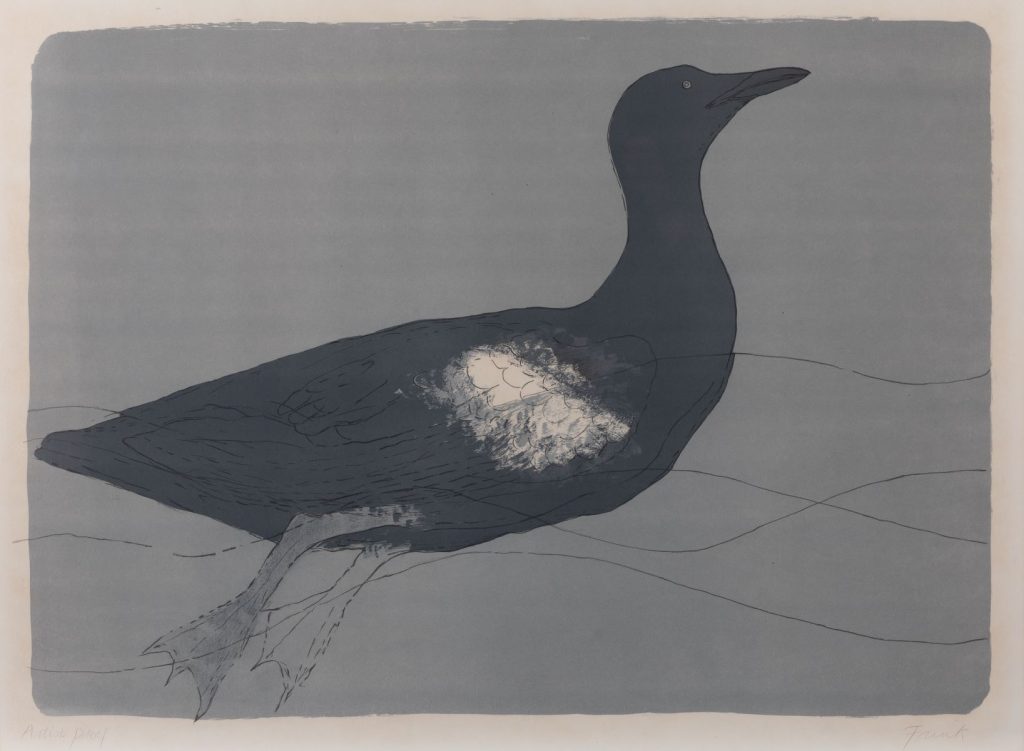
Guillemot
Though Elizabeth Frink is best known for her sculptures, she was also a superb printmaker. Being a sculptor, it is no surprise that she became fascinated by the technique of lithography, whereby an image is drawn onto a stone.
Animals were a reoccurring theme throughout her work but birds were a notable fascination, symbolising freedom, vulnerability, pain, joy and loss.
To create her prints, Frink collaborated with the highly influential Curwen Studio in London, which attracted prominent British artists such as Henry Moore, Barbara Hepworth, Graham Sutherland and John Piper.
Listen to a personal perspective on this artwork by Kerry Webb, Associate Director (Academic Liaison and Support), University Library
Credit: ©2025 The Elisabeth Frink Estate and Archive. DACS
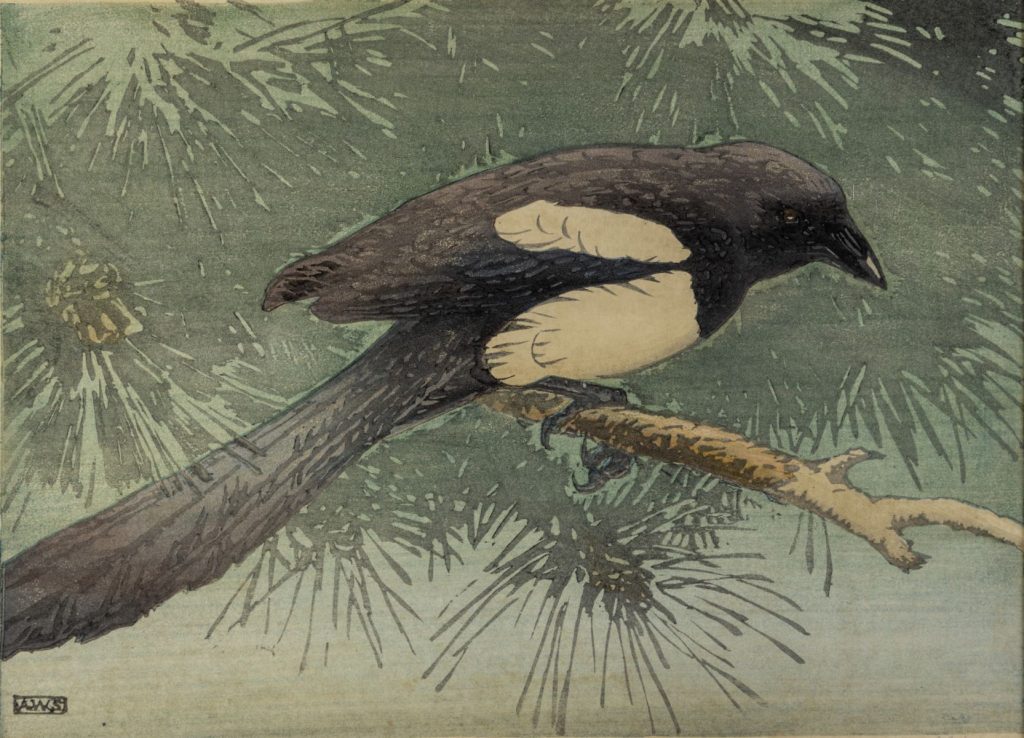
Magpie
Allen William Seaby was a student and then art tutor at University College Reading. When that institution became the University of Reading in 1926, he became Professor of Art.
In 1908, Seaby was taught woodcut printing by the Japanese artist, Yoshijiro Urushibara (1889-1953). Woodcut is the oldest form of printmaking, where knives and other tools are used to carve a design into the surface of a wooden block.
Seaby went on to become a key figure in the revival of traditional, Japanese woodblock printing in Britain. He specialised in colour woodcuts of animals and birds, as you can see here. The simple, painterly feel of these prints disguises Seaby’s great technical ability.
Listen to a personal perspective on this artwork by Martin Andrews, Printing Historian and Retired Lecturer on the Department of Typography and Graphic Communication.
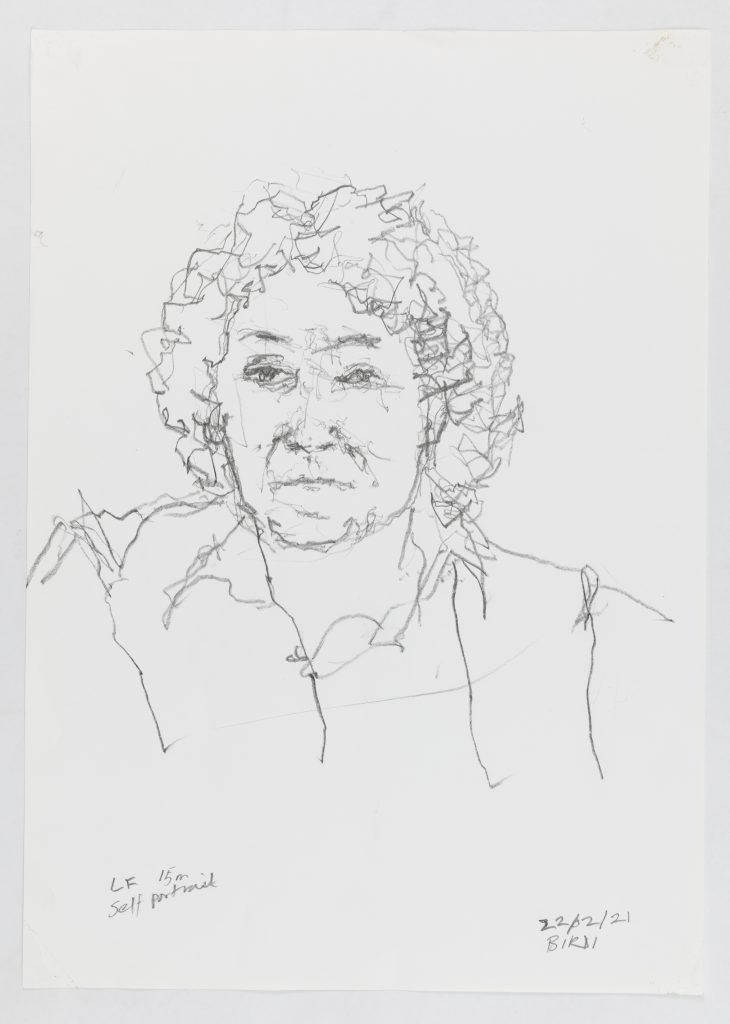
Self Portrait, Left Foot
The University of Reading Art Collection first began working with the British-Indian artist, Saranjit Birdi, in 2021, when he was awarded an Artist Residency. Birdi’s work focuses on the relationship between drawing and performance. He uses his body as a drawing tool to tell and reveal stories that may be missing from Western art collections like ours. As you can see from the inscription on the lower left of the composition, this drawing is a self-portrait of the artist, made rather unusually with his ‘L F’ – left foot!
Listen to a personal perspective on this artwork by Phillippa Heath, Head of Learning and Engagement.
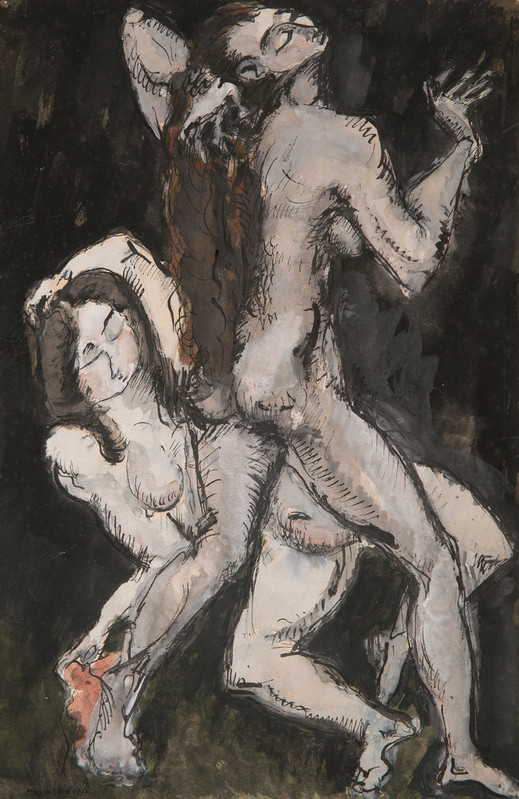
Dancing Nudes
This is an important work from a transformative period in the life of Max Weber, an American artist who pioneered the art movement known as Cubism. Weber had just finished his apprenticeship in Paris, where leading figures of the artistic avant-garde were developing radical new modes of visual expression. People and their activities were his major inspiration, and in this watercolour and ink painting, he has translated the fluid movements of dance into somewhat contorted positions.
Listen to a personal perspective on this artwork by Paul Neicho, Visitor and Researcher.

The Little Bed
Thanks to Antony Betts, Professor of Fine Art at the University of Reading from 1933-1963, we have a large collection of drawings by Walter Sickert. It was the Sickert who most informed Betts’ teaching and collecting in Reading. Betts appreciated the ways in which Sickert was alert to the theatricality, oddities and idiosyncracies of daily life, and he even introduced an iron bedstead – like the one seen in the centre of this drawing – into the ‘life room’ at Reading.
Listen to a personal perspective on this artwork by Dr Rhi Smith, Director of Academic Learning and Engagement.
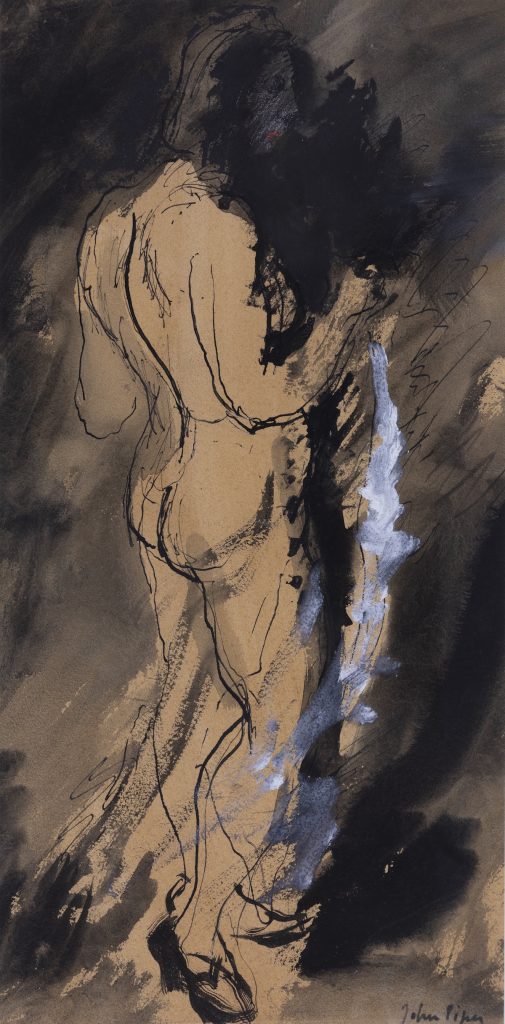
Standing Woman
John Piper was one of the most significant British artists of the 20th century. From an early age, he was fascinated by British art, architecture and history, though his father forbade him from becoming an artist. After his death in 1927, Piper quit his solicitor’s course and studied at the prestigious Royal College of Art in London. It was there that he met Anthony Betts, who later became Professor of Fine Art at the University of Reading. Betts purchased this drawing directly from the artist in January 1956, to use in his teaching.
In 1935, Piper set-up a home and studio at Fawley Bottom, on the edge of nearby Henley on Thames, where he worked for the rest of his life.
Listen to a personal perspective on this artwork by Clare Plascow, Art and Collections Manager.
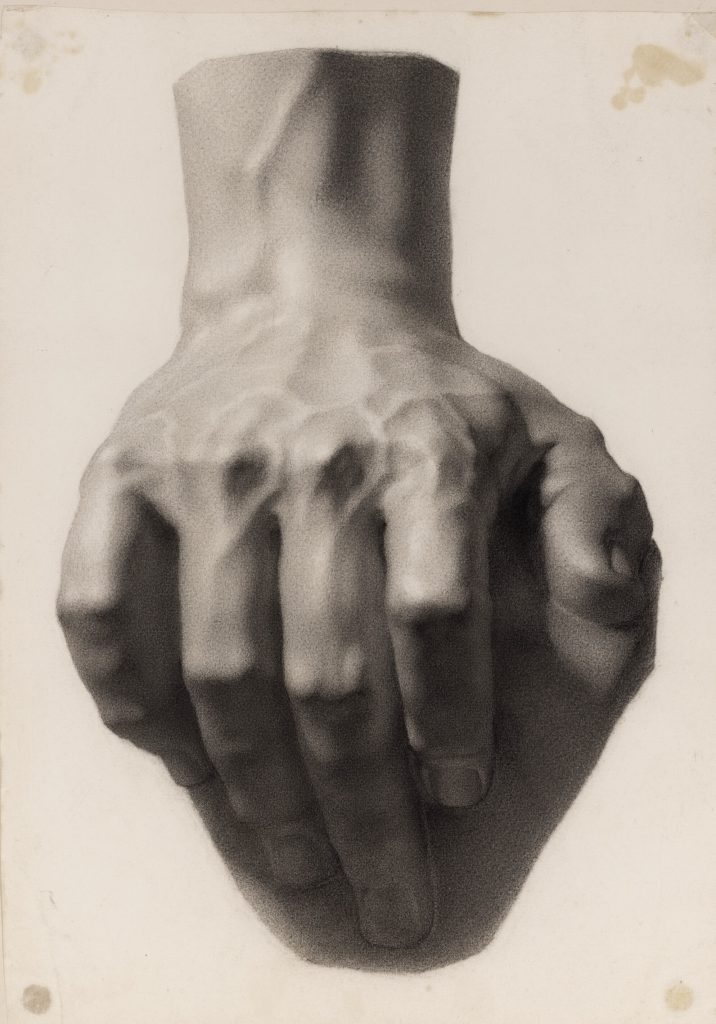
Study of a Hand
This sensitive graphite study of hand was made in 1883, the same year that the twenty-year-old Minnie Jane Shubrook formally enrolled at the Royal Academy Schools (RA) in London. Shubrook was about to begin a free, six-year course at London’s oldest and most prestigious art school — a school that had only begun admitting female students a generation earlier, in 1860.
Prior to her admission, Hardman had studied at the Islington School of Art under the tutelage of RA alumni, Henry Thomas Bosdet (1856–1934). Bosdet likely encouraged and supported Hardman through the multi-stage application process, which can be unravelled through an examination of drawings like this one.
Listen to a personal perspective on this artwork by Shona Amer, Visitor Services Assistant and Alumnus, Museum Studies and Archaeology (2021 – 2024).
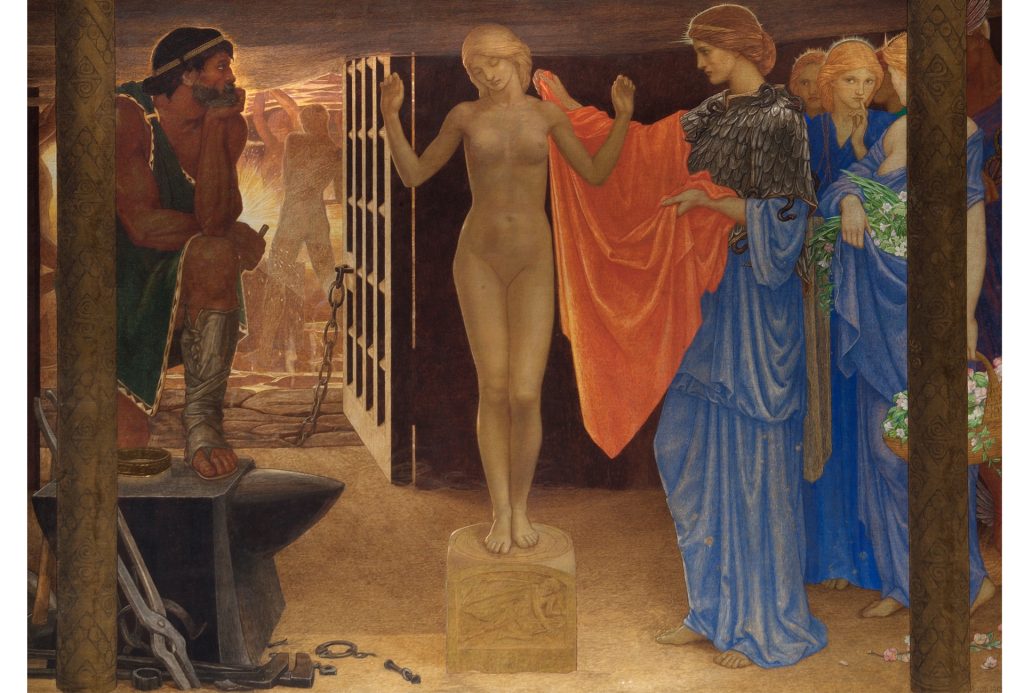
Pandora
The Greek myth of ‘Pandora’s box’ — which Pandora opened, and so unleashed all the evils known to humanity — was a popular subject for artists. However, John Batten chose to focus on the moment that Pandora was formed out of fire and clay by the Greek gods. Her naked body, displayed on a plinth like a classical sculpture, draws and holds our attention. But Pandora does not meet our gaze.
When this painting was first displayed at London’s Royal Academy of Arts in 1913, it was an opportunity for Edwardian audiences to contemplate Pandora’s idealised body — and its associations with beauty, sensuality, vulnerability and ultimately, destruction and chaos.
Listen to a personal perspective on this artwork by Abby McCormac, Art Collections Volunteer.